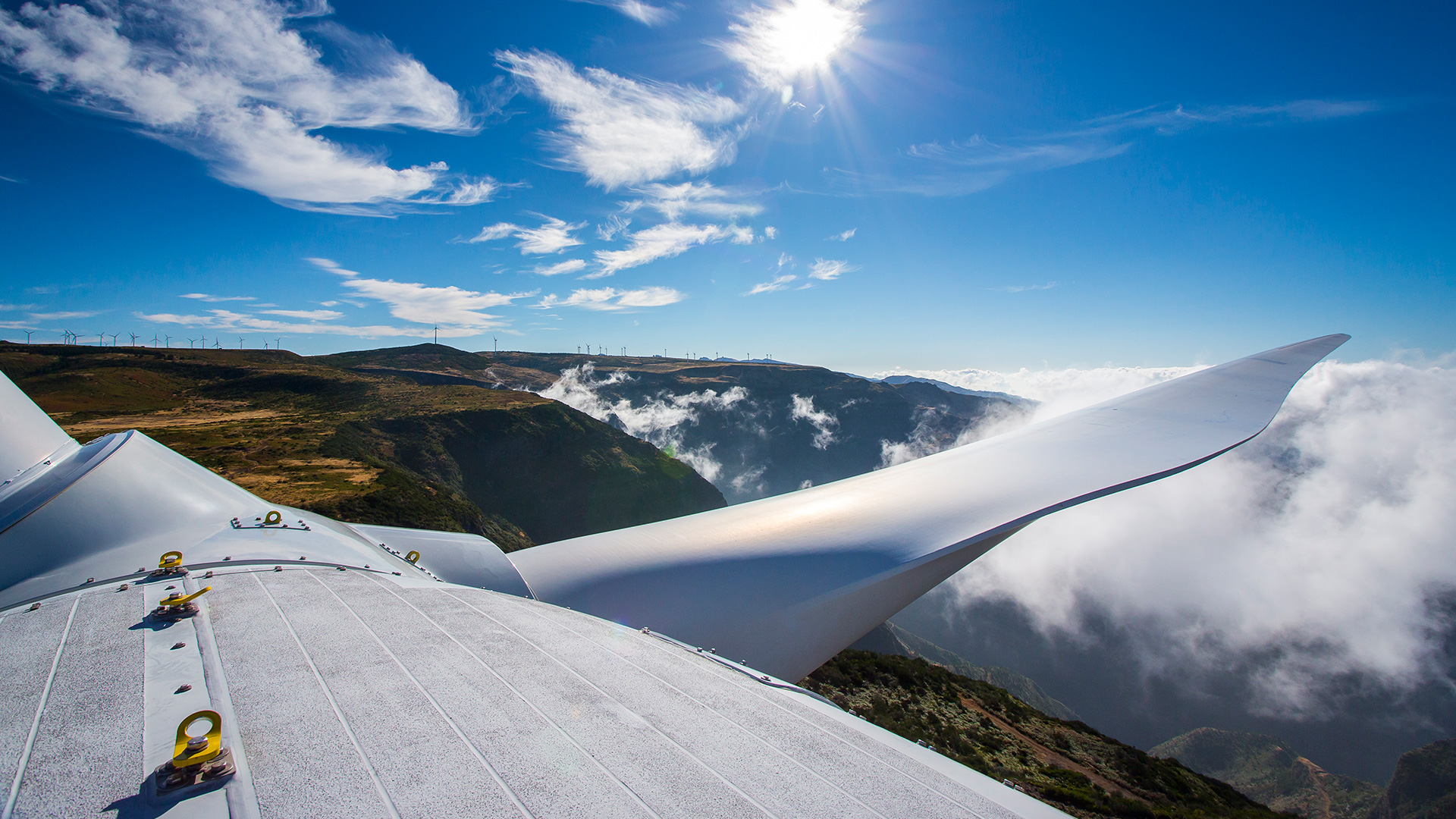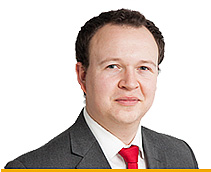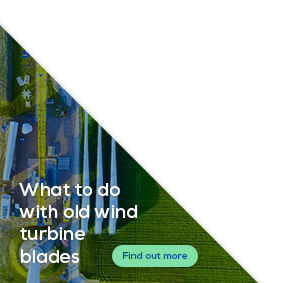Brussels Brief
Brussels Brief December 2016

6 December 2016
Time for European Parliament and Member States to take reins
CEO foreword
The European Commission put its cards on the table last week with the release of its “Clean Energy Package” – eight legislative proposals that will shape renewables deployment and electricity markets to 2030.
Overall, the package is more good than bad.
The new legislation will differ from the current rules which apply up to 2020. EU Member States will no longer have binding national renewables targets. Instead there is one binding EU-wide target (“at least” 27% of total energy), and Member States will define in national plans how they’re collectively going to meet it.
There are many positives in the proposals. The best thing is a requirement for governments to give 3-years visibility for renewable energy support (indicative timeline, volumes and budgets). This will give industry and investors a level of certainty we’ve not had before — apart from in a few model countries such as the Netherlands and Germany. And this certainty will reduce the costs of capital and give industry the confidence to keep people in jobs and invest in innovation. The next best thing is the “grandfathering” (or “Spanish”!) clause that’ll make it much harder for governments to change policies and support schemes retroactively. This will give investors much more protection than they’ve had before. There is also some good stuff on the streamlining of permitting arrangements. Governments will now have to award them via a one-stop shop. And award them more quickly than before: 3 years max for all projects; and 18 months only if it’s a repowering project.
The proposals also ensure wind power producers will have access to balancing markets and be paid for the services they provide. And wind energy will be traded as close to real time as possible in intraday and balancing markets. Priority Dispatch will still apply to existing installations but will be phased out in many cases for new ones.
What the Commission have published are just proposals. They will now be negotiated by the Member States and the European Parliament. We expect the legislation to be agreed by end-2018.
We will need to engage closely with the Member States and Parliament on a number of issues as the negotiations proceed. We need to ensure the right conditions are in place for the phase out of priority dispatch and that curtailment is well compensated. Rules for renewable energy support mechanisms will need to be clarified – e.g. to ensure they can remain technology specific. And we want the legislation to ensure that capacity remuneration mechanisms are not used to finance new coal.
It’s time for the Member States and Parliament to take the lead in shaping this proposal into ambitious legislation that will increase the roll out of renewables in Europe. And keep the European wind industry on a competitive footing with the rest of the world after 2020.
COP22

© UNFCCC
COP22: climate finance for wind in developing countries
When COP22 opened on 7 November in Marrakech, negotiators from almost 200 countries were all set to start turning the Paris Agreement into a blueprint for action. The conference took place days following the entry into force of the landmark agreement, after it was ratified by more than 100 countries.
But the election of climate skeptic Donald Trump put some dark clouds over Marrakech. Could the deal and the global commitment to fight climate change survive such a blow?
The Moroccan COP presidency stoically pushed on with their work. With the Marrakech call, negotiators sent a strong signal that the international community will stick to its pledge made in Paris. Meanwhile, countries agreed that they would finalise a rulebook to implement the Paris Agreement by 2018. And that national governments would accelerate the transformation of their pledges into legislation.
These pledges is what brought WindEurope to Marrakech. More than 70 non-European countries have highlighted wind energy in their climate plans. It represents huge opportunities for the European wind energy industry. But to get the transition to a clean energy future going in these countries, policies that attract investments in wind power need to be implemented. Developing countries also need international institutions to step in with innovative financial instruments that could attract more substantial private capital flows.
In this light, WindEurope hosted a side event on wind energy investments in emerging markets, in particular in Africa. Representatives from the European Parliament, European Commission, European Investment Bank, New Climate Economy and UPC Renewables discussed how to reduce risk perception in emerging markets. They concluded the key to a successful project is making a power purchase agreement sufficiently bankable for an investor. Policymakers stressed a trend of providing more blending instruments from the EU budget to offer investors in Africa proper risk mitigation and credit enhancement solutions.
Members’ successes

© VBMS
VBMS awarded Borssele Alpha export cabling contract
VBMS was awarded the Borssele Alpha contract for the installation of two export cables that will connect the Borssele offshore wind farms 1 and 2 to TenneT’s onshore grid in the Netherlands. Following the award last September to DONG Energy to build Borssele wind farms, now the contracts for the grid connection are signed. Separately, the option has been awarded for the installation of the export cables that will connect the Borssele offshore wind farms 3 and 4 to the Dutch onshore grid (Borssele Beta), subject to financial close.
The grid connection of the Borssele offshore wind area in the North Sea consists of two 700 MW connections, called Alpha (for Borssele 1 and 2) and Beta (for Borssele 3 and 4). The contract for the Alpha export cabling scope entails the supply and installation of two 61-kilometer-long export cables. The cables will be routed via the Western Skeldt estuary and will come ashore near the existing high-voltage substation at Borssele, the Netherlands.
Results of the auction of Borssele 3 and 4 wind farms are expected before the end of the year.
IHC wins maritime innovation award
The Integrated Monopile Installer – developed by Royal IHC’s subsidiary, IHC IQIP – has won the Maritime Innovation Award at the 11th Maritime Awards Gala. The award is presented annually for a Dutch innovation from the maritime sector that meets the requirements for widespread potential application, excellent marketing prospects and sufficient export possibilities.
The judges singled out the Integrated Monopile Installer for the award due to the distinctive combination of innovations within a single system and its promotion of corporate social responsibility. The system allows monopile foundations to be installed efficiently and safely, and mitigates noise during pile-driving. In addition, it effectively reduces costs while offering environmental protection.
The system is an optimal combination of both knowledge and equipment that enhances the process of installing monopile wind turbine foundations. By seamlessly integrating technologies, the Integrated Monopile Installer reduces operation times, creates a safer working environment and increases the level of precision during offshore installations.
The Noise Mitigation System component creates a sealed-off environment, separate from external currents and waves, and mitigates the noise released during pile-driving. Both the optimisation of the installation process and the environmental protection will extend the use of monopiles as wind turbine foundations.
Interview with Philip Cole
WindEurope welcomes new team member
 This month we introduce Philip Cole who joined WindEurope in October as the Key Account and Business Development Manager. Philip works alongside Caroline, Diana, Iga and Joana in the membership team and oversees WindEurope members at C1 and Leading Member level.
This month we introduce Philip Cole who joined WindEurope in October as the Key Account and Business Development Manager. Philip works alongside Caroline, Diana, Iga and Joana in the membership team and oversees WindEurope members at C1 and Leading Member level.
- Welcome to WindEurope! Can you give us a brief overview of your career so far?
My career to date has been mainly within the fast moving consumer goods (FMCG) sector in the UK, working for a range of large multinationals such as Lindt & Sprüngli, L’Oréal and Kellogg’s, mostly as a sales manager and contract negotiator with also some time spent in commercial strategy functions. - Why did you choose to join WindEurope?
I grew up 5 miles away from a wind farm in South Wales and as a child would often look up in amazement and wonder how these majestic machines worked. As a result, I’ve naturally followed the renewables sector for a number of years with interest and so after spending the last 10 years within the FMCG sector in the UK, I made the decision to pursue renewables as a new career. Being able to utilise my commercial experience in a renewables setting, particularly with wind taking me back to my youth, was my main reason for joining WindEurope. - How different do you find WindEurope compared to other associations that you have been involved in?
From having been involved with different trade associations in the past as a member, it’s refreshing to see how active WindEurope members are in furthering the joint political and commercial aspects of the wind industry. The idea of a working group where members come together to work on existing and future areas that affect the industry as a whole would be unheard of in the UK, and so it’s fantastic to see the collaboration in our association! - What do you think are the three biggest benefits that members get from WindEurope?
Networking forms a large part of our association, allowing companies of all sizes to come together and work on joint projects, which as any company knows can be the hardest part of the whole process. Whether it be at the exhibitions, conferences, high level gatherings or at informal occasions, the options to meet fellow members are endless.
Our contacts within the EU institutions offer members an unparalleled insight into, and ability to influence via our advocacy team, the renewable energy agenda, allowing members to be more proactive than reactive in this ever-evolving market.
We also have an experienced business intelligence team who coordinate the WindEurope working groups, as well as monitor the market and produce reports on latest news and trends, so they’re a great source of information that are dedicated to members. - Offshore Wind Energy 2017
Ensure you organisation is part of the programme of the world’s foremost offshore wind energy conference, London 6-8 June 2017, co-organised by WindEurope and Renewable UK.- Submit your abstract by 15 December 2016.
- Resource Assessment 2017
As requested by members, WindEurope will hold its 4th technology workshop on wind resource assessment on 16 & 17 March 2017 (venue to be confirmed in December). Over 200 experts from Europe, the Americas and Asia are expected at what is renowned as the foremost meeting on the topic in Europe.- Submit your abstract by 10 January.
- For exhibition and sponsorship opportunities with a highly targeted audience contact [email protected] or tel: +32 2 213 1827.
I look forward to working with you all throughout 2017 and beyond. Please feel free to contact me on [email protected], my landline +32 2213 1865 or my mobile +32 498 889 467 to discuss the range of benefits available to you via your membership of WindEurope.
ETIPWind
Members tell European Commission where industry needs R&I funding
On 18 November ETIPWind (European Technology and Innovation Platform on Wind Energy) submitted concrete topics for the H2020 Strategic Work programme for 2018-2020. The European Commission’s Directorate General for Research has welcomed this early input that fleshed out the wind industry’s main R&I focus areas in the Strategic Research and Innovation Agenda (SRIA) presented to Vice-President Maroš Šefčovič in September.
EU projects
WindEurope advises members on how to access EU funds
In October WindEurope ran a webinar for members on “EU projects: how to secure funding”. All members can now take a look at the webinar recording for an overview of funding schemes and how they work, plus practical advice on how to prepare an application that will have maximum chances of success.
Social engagement toolkit available in 6 languages
The WE Engage Toolkit produced by the recently completed WISE Power project (coordinated by WindEurope) is designed to help all stakeholders build, implement and deliver effective and meaningful social engagement strategies in relation to onshore wind farms. The toolkit is built for developers, transmission network operators, communities, local authorities and other stakeholders and is available in English, French, German, Italian, Spanish and Croatian.
Market4RES recommendations on electricity market design available in 6 languages
In October the Market4RES project, in which WindEurope is a partner, launched its final report “Post-2020 framework for a liberalised electricity market with a large share of renewable energy sources”. The Executive Summary of the report is available in English, French, German, Italian, Polish and Spanish.
WindEurope technology workshop

Wind turbine sound experts met in Poland
90 wind energy experts from 20 countries (including Australia, China, New Zealand and USA) met in Gdansk, Poland on 17 & 18 November, at WindEurope’s third edition of its wind turbine sound technology workshop. Participants examined the characteristics of wind turbine sound, with a special focus on low frequency sound, including its impact on humans. Members can access the proceedings in the Members’ Area.


